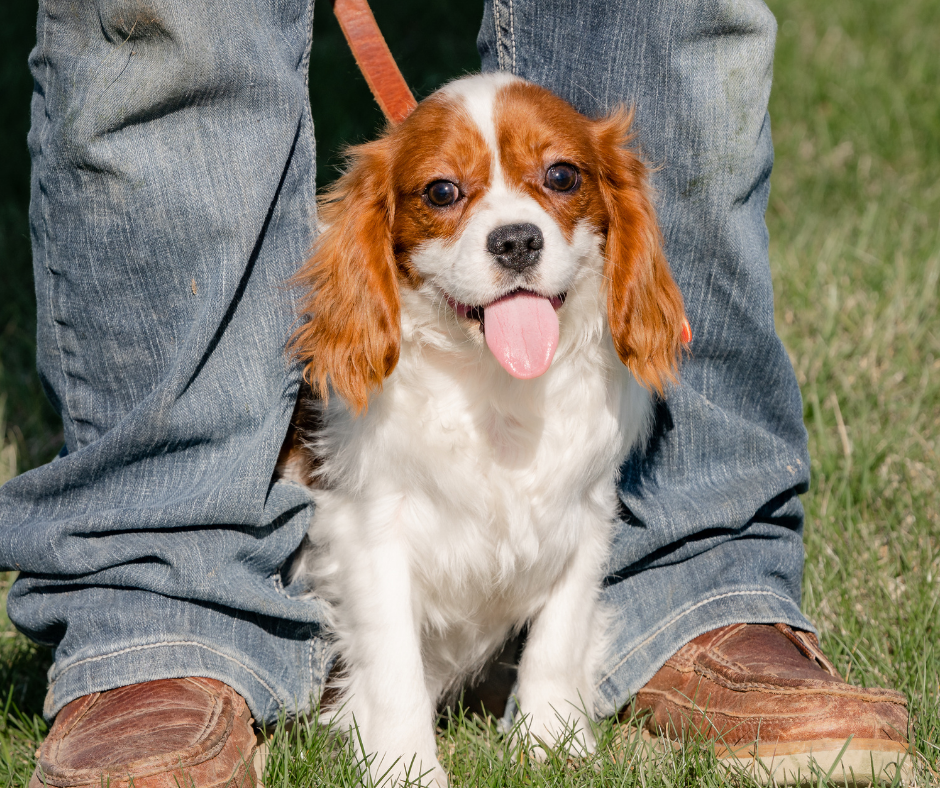Cavalier King Charles Spaniels are beloved for their charming personalities and stunning appearances. These small and affectionate dogs make excellent companions, but like all breeds, they require proper training to ensure they are well-behaved and happy members of your family.
Training your Cavalier King Charles Spaniel involves using positive reinforcement techniques. Start with basic commands like "sit," "stay," and "come," rewarding them with treats and praise when they obey. Be consistent with commands and patient with your pup, as Cavaliers are sensitive dogs. Address behavior issues like house training, barking, and chewing with patience and redirection. Socialize them early to prevent fearfulness or aggression.
Understanding Your Cavalier King Charles Spaniel
Before diving into training techniques, it's essential to understand the breed's characteristics and temperament. Cavaliers are known for their:
- Affectionate Nature: Cavaliers are exceptionally affectionate dogs. They thrive on human companionship and are often referred to as "Velcro dogs" because they love to be by their owner's side.
- Playful Disposition: These dogs have a playful and fun-loving personality. They enjoy games, toys, and outdoor activities.
- Intelligence: Cavaliers are intelligent dogs and quick learners. They can excel in obedience training and various canine activities.
- Sensitivity: Cavaliers are sensitive dogs that respond well to positive reinforcement but can become anxious or fearful if subjected to harsh training methods.
- Social Nature: They are typically good with other dogs and make wonderful family pets. However, they might be reserved around strangers initially.
- Moderate Exercise Needs: While they enjoy playtime, Cavaliers are not extremely high-energy dogs. They require regular exercise but are also content to cuddle on the couch.
Understanding these traits is crucial for tailoring your training approach to your Cavalier King Charles Spaniel's unique personality.
Basic Training Principles You Need to Know
Before delving into specific obedience commands and behavior modification techniques, it's essential to establish some fundamental training principles that will set the foundation for successful training:
Positive Reinforcement
Positive reinforcement involves rewarding your dog for good behavior with treats, praise, or affection. Cavaliers respond well to positive reinforcement, as they are eager to please and enjoy pleasing their owners. Be consistent with your rewards and use them immediately after your dog exhibits the desired behavior.
Consistency
Consistency is key in dog training. Use the same commands, cues, and hand signals consistently to avoid confusion. Ensure that everyone in your household uses the same commands and rewards for consistency.
Patience
Patience is a virtue in dog training. Understand that your Cavalier may not learn everything overnight. Be patient, and never resort to punishment or harsh methods, as this can damage the trust between you and your dog.
Short, Frequent Sessions
Keep training sessions short and frequent, ideally around 10-15 minutes per session. Cavaliers have relatively short attention spans, so breaking up training into smaller segments can help them stay engaged and focused.
Obedience Training for Your Cavalier King Charles Spaniel
Now, let's delve into specific obedience commands and how to teach them to your Cavalier King Charles Spaniel:
Sit
The "sit" command is one of the most basic and essential commands for any dog. To teach your Cavalier to sit:
- Hold a treat close to your dog's nose, and slowly move your hand upward.
- As your dog's head follows the treat, their rear end will naturally lower to the ground.
- As soon as your dog sits, say "sit" and reward them with the treat and praise.
- Repeat this process several times in short training sessions until your dog reliably sits on command.
Stay
The "stay" command is crucial for keeping your Cavalier safe in various situations. To teach your dog to stay:
- Start with your dog in a sitting position.
- Hold your hand up, palm facing your dog, and say "stay."
- Take a step back while keeping your hand up and maintaining eye contact with your dog.
- If your dog stays in place, return to them, reward with a treat, and praise. If they move, calmly repeat the command.
- Gradually increase the distance and duration of the "stay" command as your dog becomes more comfortable.
Come
The "come" command is essential for recall and keeping your dog safe in outdoor settings. To teach your dog to come when called:
- Start indoors or in a quiet, fenced area with minimal distractions.
- Get down to your dog's level and call their name followed by the command "come."
- Encourage your dog with an inviting tone and open arms.
- When your dog comes to you, reward them with a treat and plenty of praise.
- Gradually increase the distance between you and your dog, practicing in more distracting environments as they improve.
Down
The "down" command is useful for keeping your Cavalier calm and well-behaved in various situations:
- Begin with your dog in a sitting position.
- Hold a treat in your hand and lower it to the ground in front of your dog.
- As your dog follows the treat to the ground, say "down" and reward them when they lie down.
- Repeat this process until your dog consistently responds to the "down" command.
Leave It
The "leave it" command is vital for preventing your Cavalier from grabbing or consuming harmful items:
- Place a treat in your closed hand and present it to your dog.
- When your dog shows interest in the treat and attempts to get it, say "leave it" firmly but calmly.
- Wait for your dog to lose interest and back away from your hand.
- As soon as they do, reward them with a different treat and praise.
- Gradually progress to more challenging items, like toys or food on the ground, while reinforcing the "leave it" command.
Behavior Training and Modification
In addition to basic obedience commands, behavior training is essential for a well-rounded and well-behaved Cavalier King Charles Spaniel. Here are some common behavior issues and how to address them:
House Training
House training is a crucial early step for puppies. Use positive reinforcement and a consistent schedule to teach your puppy where and when to eliminate. Be patient, and never scold your puppy for accidents.
Barking
Cavaliers can be vocal, but excessive barking can be problematic. To address this issue:
- Identify the trigger for the barking, whether it's boredom, fear, or alerting to something.
- Use the "quiet" command to teach your dog to stop barking on cue.
- Provide mental and physical stimulation to reduce boredom-related barking.
Chewing and Destructive Behavior
Cavaliers, especially puppies, may engage in chewing and destructive behavior. To manage this:
- Provide plenty of appropriate chew toys and rotate them to keep your dog engaged.
- Use bitter apple spray or other deterrents on items your dog should not chew.
- Supervise your dog closely and use crate training when necessary.
Separation Anxiety
Cavaliers are prone to separation anxiety due to their attachment to their owners. To help alleviate separation anxiety:
- Gradually desensitize your dog to your departures by leaving for short periods and gradually increasing the time.
- Create a comfortable and safe space for your dog with toys and a cozy bed.
- Consider professional help if separation anxiety is severe.
Aggression or Fearfulness
If your Cavalier displays aggression or fearfulness, it's essential to address the issue promptly:
- Consult a professional dog trainer or behaviorist for guidance on managing and modifying aggressive behavior.
- Socialize your dog from an early age to help reduce fearfulness.
- Avoid situations that trigger fear or aggression and use positive reinforcement to reward calm behavior.
Advanced Training and Enrichment
Once you've mastered basic obedience and addressed any behavior issues, consider advanced training and enrichment activities to keep your Cavalier King Charles Spaniel mentally and physically stimulated:
Trick Training
Cavaliers love to learn, and teaching them tricks can be both fun and mentally stimulating. Consider teaching your dog tricks like "roll over," "play dead," or "shake hands."
Canine Sports
Cavaliers can excel in canine sports such as agility, obedience trials, and even dog dancing. These activities provide both physical exercise and mental stimulation.
Interactive Toys and Puzzles
Provide your dog with interactive toys and puzzles that dispense treats when manipulated correctly. These toys keep your dog engaged and mentally sharp.
Regular Exercise
Ensure your Cavalier gets daily exercise through walks, playtime, and exploration. Regular exercise is essential for their physical and mental well-being.
Training your Cavalier King Charles Spaniel in obedience and behavior is a rewarding journey that strengthens your bond with your furry friend and ensures they are well-adjusted and happy companions. Remember to be patient, use positive reinforcement, and seek professional help when necessary. With consistency and love, your Cavalier can become a well-mannered and well-rounded canine companion, bringing joy and happiness to your family for years to come.

